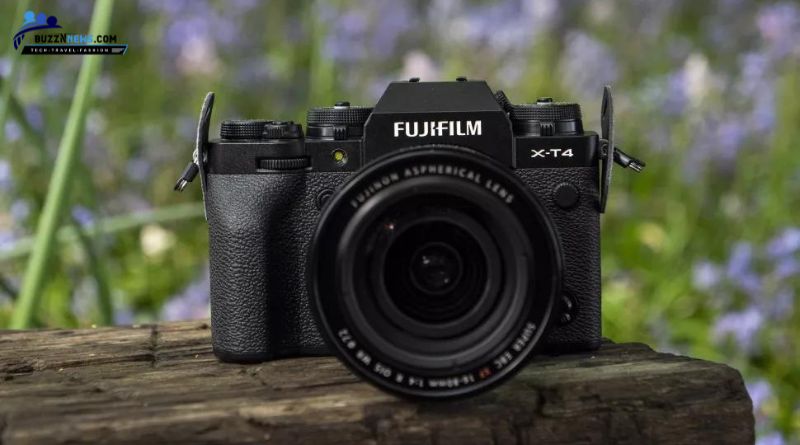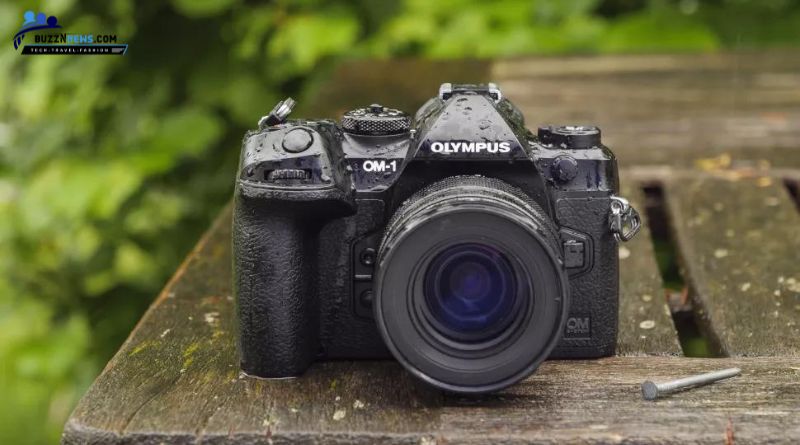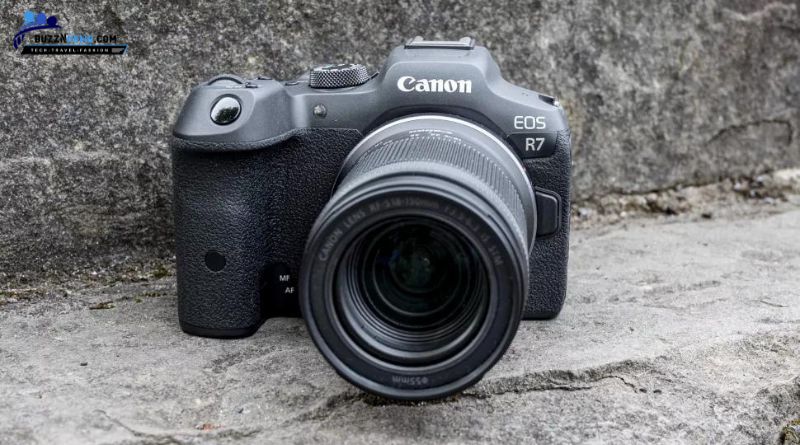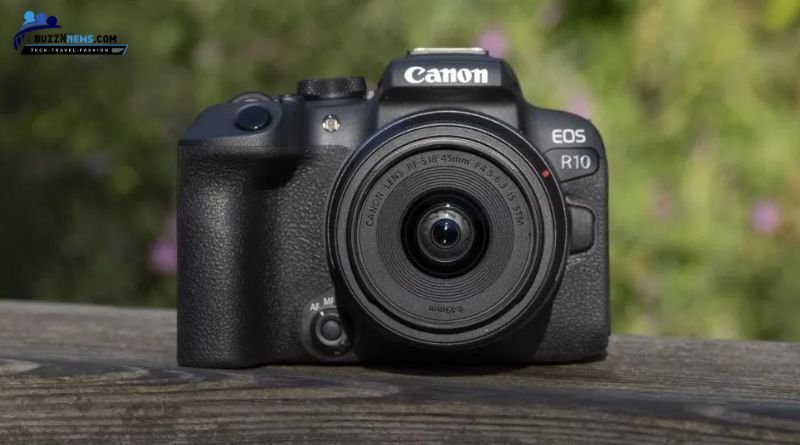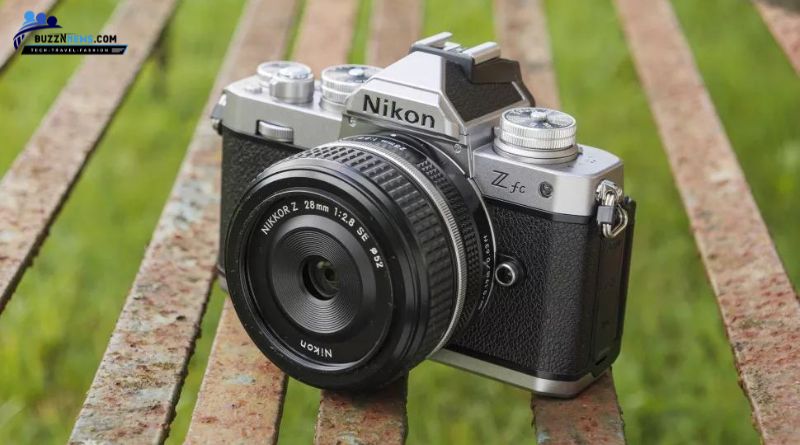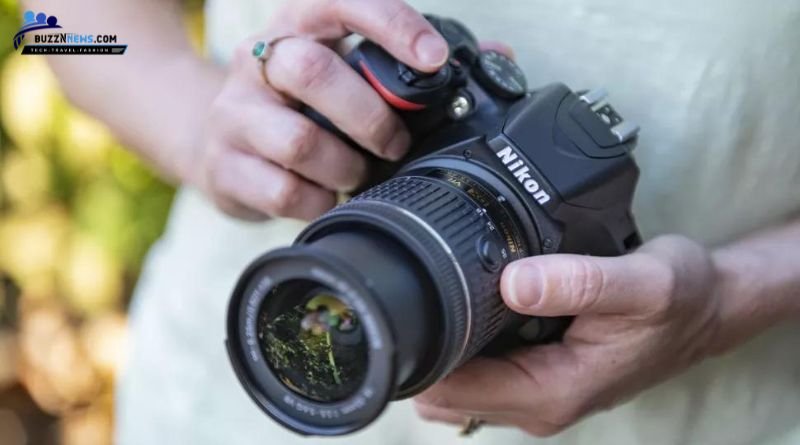Even while the top cameras of today are increasingly focusing on video, their primary capability is still taking pictures. And there are many deserving rivals for the title of finest camera for photography as a result of improvements in focusing and burst shooting capability. Fortunately, we’ve tested every single one of them extensively to provide you this consistently updated list of the best models for stills photography. (Are you interested in the top video cameras instead? Visit our dedicated resource for them).
When it comes to cameras, there is no one size fits all. The best option for you will rely on a number of things, such as your spending limit, unique design preferences, lens requirements, and more. We’ve divided this guide into three ability levels—enthusiasts, beginners, and advanced—to assist make your choice a little bit simpler. Every one of them includes our selection of the top cameras for that skill levels and price ranges.
What do you consider to be the ideal camera for photography in general? It is the Sony A7 IV at the moment. The A7 IV is still a strong all-around camera that is comfortable shooting virtually any form of photography, from portraits to wildlife and weddings, despite the odd concession that comes with its desire to cover all bases (including very small burst-shooting speeds for the price).
However, the A7 IV is undoubtedly an expensive camera for amateur photographers, so we’ve also listed a tonne of alternatives that are less expensive or provide more value for your money. Even if there are rumours of an X-T5, the Fujifilm X-T4 is still a good option for those on a tighter budget. The Canon EOS R10, which is our top selection for new photographers, as well as the Nikon Zfc and Fujifilm X-S10 are all excellent options for enthusiasts and street photographers. If none of those catch your attention, have a look at our list to the finest inexpensive cameras available right now.
This comprehensive manual is the result of numerous hours spent testing the newest digital cameras from the top manufacturers in the industry, including Canon, Sony, Nikon, Fujifilm, Panasonic, Leica, and others. As a consequence, you can rest assured that we have only included the top models here; the actual question is which one is ideal for you. You can also be certain that you’re getting the greatest bargain on the camera that’s suited for you thanks to our convenient price comparison tool.
The best camera for photography in 2022:
BEST STARTER CAMERAS FOR PHOTOGRAPHY
1.Sony A7 IV
SPECIFICATIONS
Sensor size: Full-frame Resolution: 33MP Viewfinder: 3,690K dots Monitor: 3.0-inch vari-angle touchscreen, 1,037K dots Autofocus: 759-point AF Maximum continuous shooting rate: 10fps Movies: 4K at 60p User level: Intermediate
REASONS TO BUY
- +Impressive 33MP sensor
- +Class-leading autofocus
- +Vari-angle screen
REASONS TO AVOID
- -Heavily cropped 4K footage
- -Complex for beginners
It was never going to be simple to follow Sony’s brilliant A7 III, but the A7 IV is a respectable sequel. It’s an intriguing mirrorless alternative for hybrid shooters and comes with a new 33MP sensor that performs well in both still and video situations. It is a “great mix of photography capability and video adaptability,” as we stated in our review.
While a price increase means it is no longer an entry-level full-frame camera like its predecessor, the Bionz XR processor provides strong performance that more than makes up for the additional cost.
Additionally, Sony’s A7 IV benefits from improvements like 10-bit video capability and a buffer depth that seems to never stop when using a CFexpress card, as well as its industry-leading focusing capabilities. In our studies, we discovered that this buffer is more generous than the majority of shooters would require, with image quality favouring resolution above low-light performance.
No hybrid camera is perfect; 4K footage has a significant crop, and it isn’t the easiest camera for novices to use. For a comparable cost, the Canon EOS R6 also has quicker burst speeds. But the Sony A7 IV rightfully claims the top place thanks to its strong adaptability and greater resolution.
2.Fujifilm X-T4
SPECIFICATIONS
Sensor size: APS-C Resolution: 26.1MP Viewfinder: 3,690K dots Monitor: 3.0-inch tilt-angle touchscreen, 1,620K dots Autofocus: 425-point AF Maximum continuous shooting rate: 15fps (mechanical shutter), 30fps (electronic) Movies: 4K at 60p User level: Intermediate
REASONS TO BUY
- +Superb image quality
- +IBIS a big bonus for video
REASONS TO AVOID
- -No headphone jack
- -Video recording limit
Although it is not a full-frame camera, the Fujifilm X-T4 is the greatest APS-C camera we have ever reviewed. Its combination of capabilities, size, and price make it a great option for amateur shooters. The Fujifilm X-T4 improves on the strong basis of the X-T3 by including in-body image stabilisation (IBIS), quicker burst shooting, and some clever design changes. A larger battery (which lasts about 500 shots per charge) and some better autofocus, which our testing showed to be quick and dependable in most situations, add to its all-around abilities.
The 26MP APS-C sensor of the X-T4 is, in our opinion, the best in its class for still photography, but it also makes an excellent video camera. The X-T4 supports the in-body image stabilisation (IBIS), which is a tremendous plus, with a vast selection of tools and a fantastic shooting experience, featuring a fully articulating touchscreen. The X-T4 and its excellent selection of X-series lenses provide a superb, smaller alternative for people searching for a mirrorless all-arounder, even if it may cost the same as some full-frame cameras. Despite the potential release of a Fujifilm X-H2, it is still one of the greatest cameras for taking pictures.
3.Canon EOS R6
SPECIFICATIONS
Sensor size: Full-frame Resolution: 20.1MP Viewfinder: 3,690K dots Monitor: 3.0-inch tilt-angle touchscreen, 1,620K dots Autofocus: 6,072-point AF Maximum continuous shooting rate: 12fps (mechanical shutter), 20fps (electronic)Movies: 4K at 60p User level: Professional
REASONS TO BUY
- +Class-leading autofocus
- +Excellent full-frame IBIS
- +Dual card slots
REASONS TO AVOID
- -Video recording limits
- -20MP resolution
While the Canon EOS R5 is overkill for most users, the EOS R6 is an alternative full-frame model that is more reasonably priced and unquestionably among the greatest cameras for photography available today. This is a more than worthy upgrade if you currently possess one of Canon’s early mirrorless full-frame cameras, such as the EOS R, or any of its DSLRs. According to our evaluation, the EOS R6 is a very good camera for wildlife or sports photography since it has best-in-class autofocus, an excellent in-body image stabilisation system, and burst shooting capabilities.
Despite having the capacity to record 4K/60p video, the EOS R6 lacks features like DCI 4K and has overheating issues when compared to competitors with a video emphasis, like the Sony A7S III, making it more suitable for stills shooters. But as a full-frame camera, it’s a terrific (though expensive) choice that offers really amazing focusing, handling, and features, making it one of the finest alternatives available.
4.OM System OM-1
SPECIFICATIONS
Sensor size: Micro Four Thirds Resolution: 20.4MP Viewfinder: 5,760K dots Monitor: 3.0-inch tilt-angle touchscreen, 1,620K dots Autofocus: 1,053-point AF Maximum continuous shooting rate: 10fps (mechanical shutter), 120fps (electronic) Movies: 4K at 60p User level: Intermediate/Professional
REASONS TO BUY
- +Stacked sensor boosts performance
- +Impressive stabilization
- +Useful computational modes
REASONS TO AVOID
- -Only 20MP resolution
- -Slightly fiddly controls
Not everyone needs a full-frame camera, and the OM System OM-1, like the Fujifilm X-T4 (see no. 2 above), takes use of its smaller sensor to offer a compelling option for those who value portability, adaptability, and a fun handheld experience. The OM-1 did well in the majority of our tests because to its brand-new, industry-first stacked Micro Four Thirds sensor and a quick TruePix X processor. Simply put, it’s one of the most entertaining cameras you can get.
We discovered that the OM-1 had slightly less aggressive noise reduction than its Olympus-made predecessors and functioned admirably up to ISO 1600. The greatest computational options you’ll find outside of a smartphone include High Res Shot, Live ND, and in-camera Focus Stacking, which help offset the smaller sensor’s disadvantages. The controls can be a touch tricky, and its autofocus tracking isn’t nearly as good as Canon or Sony’s. Additionally, the 20MP resolution isn’t very high for a camera at this pricing. However, if you can get past those shortcomings, the OM-1 (and its enormous selection of Micro Four Thirds lenses) would make a great travel companion.
5.Canon EOS R7
SPECIFICATIONS
Sensor size: APS-CResolution: 32.5MPViewfinder: 2,360K dotsMonitor: 3.0-inch tilt-angle touchscreen, 1,620K dotsAutofocus: 5,915-point AFMaximum continuous shooting rate: 15fps (mechanical shutter), 30fps (electronic)Movies: 4K at 60pUser level: Hobbyist / professional
REASONS TO BUY
- +Speedy burst shooting
- +Tenacious autofocus
- +Great value
REASONS TO AVOID
- -Limited native lenses
- -No 4K/120p video mode
The EOS R7 is a fantastic option if you enjoy photographing fast-moving subjects like animals but can’t quite afford a full-frame Canon camera like the EOS R6. Although its high ISO performance isn’t as good as that of its full-frame brothers because to the smaller APS-C sensor, the advantage is that smaller lenses have a greater field of view. Our testing confirm the EOS R7’s boasts of 15 frames per second continuous shooting with the mechanical shutter or 30 frames per second with the electronic shutter. Even if you can’t maintain such speeds for as long as a camera like the EOS R6, most wildlife topics can be captured in a few seconds.
The EOS R7 also carries over Canon’s EOS R system’s subject-tracking AF abilities, which is another significant benefit. According to our tests, this is the ideal subject matter for sports, action, and nature. We also liked the camera’s hefty grip, which makes it easy to handle while using long lenses, and the fact that it has two UHS-II card slots, which makes it attractive to professionals looking for a second body. There are now just two native lenses available for the APS-C sensor of the EOS R7, which is the only drawback. While you wait for Canon to produce more, you can still attach current full-frame RF lenses or adapt older EF lenses.
BEST ADVANCED CAMERAS FOR PHOTOGRAPHY
1.Canon EOS R5
SPECIFICATIONS
Sensor: Full-frame CMOS Mega pixels: 45 Autofocus: 5,940-zone AF Screen type: 3.15-inch tilting touchscreen, 2.1m-dots Continuous shooting speed: 20fps Movies: 8KUser level: Enthusiast / expert
REASONS TO BUY
- +Superb autofocus
- +Solid IBIS system
- +Good battery life
REASONS TO AVOID
- -CFExpress cards can be costly
- -Some limitations for video
The Canon EOS R5 is one of the greatest cameras the photography giant has ever produced if you think of it as a professional stills model with some excellent video features. It undoubtedly has video restrictions when compared to competitors like the Sony A7S III, especially when it comes to recording longer clips. However, after reviewing it, we concluded that it was excellent for anybody wishing to capture amazing still images in practically any setting, whether it be for wildlife or studio photography.
The EOS R5’s autofocus is especially noteworthy since it provides highly precise and dependable subject-detection and tracking, especially when it comes shooting people or animals. You also get a fantastic EVF with 5.76 million pixels, a body with a design that will seem comfortable to DSLR users, and mechanical shutter burst shooting at 12 frames per second (or 20fps with the electronic equivalent). Even while it can only record in brief bursts, the video performance is still better than that of cameras like the Sony A9 II and Nikon Z7. The Canon EOS R5 is the next-generation mirrorless camera that professional photographers have been waiting for, with a growing selection of (although expensive) RF lenses.
2.Olympus OM-D E-M10 Mark IV
SPECIFICATIONS
Sensor: Stacked APS CMOS Megapixels: 26 Autofocus: Intelligent Hybrid AF Screen type: 3-inch vari-angle touchscreen, 1.62m-dots Continuous shooting speed: 40fps (electronic), 15fps (mechanical) Movies: 6KUser level: Enthusiast / expert
REASONS TO BUY
- +Super-fast burst shooting
- +Impressive viewfinder
- +Good autofocus-tracking skills
- +Powerful video camera
REASONS TO AVOID
- -AF still just behind leading pack
- -Pricier than some full-frame models
- -Lacks retro Fuji charm
The X-H2S, one of Fujifilm’s two flagship cameras, is among the finest hybrid cameras available if you’re looking for a quick companion that can capture both still images and 6K video. If you’re satisfied with the 26MP resolution provided by the X-H2S, it’s a great alternative to its competitors with “stacked” full-frame sensors. Its X-H2 brother may provide 40MP of resolution.
The X-H2S is a cut above any other APS-C cameras we’ve tested since its APS-C sensor also has a “stacked” architecture, which delivers quicker read-out rates than normal sensors. When using its electronic shutter, it can shoot at a blistering 40 frames per second with complete AF/AE tracking, but we found that 20 frames per second was the sweet spot for autofocus performance and overall workflow.
The Fujifilm X-H2S has a nice deep grip and one of the best electronic viewfinders we’ve tested, albeit it may not have the same nostalgic appeal as Fujifilm’s X-T series. The only serious issues we have are that Sony and Canon still outperform it in terms of focusing, especially for video, and that there aren’t many choices for telephoto lenses. Its 40 frames per second (fps) may possibly seem a little excessive to you. The X-H2S is unquestionably one of the greatest all-around cameras you can purchase, though, if not.
3.Sony A7R IV
REASONS TO BUY
- +Improved ergonomics
- +Fast, intelligent AF
- +Brilliant viewfinder
REASONS TO AVOID
- -Rolling shutter noticeable in videos
- -No in-camera RAW processing
Megapixels, dynamic range, and weatherproofing are frequently requirements for landscape photographers, and the Sony A7R IV meets all of those requirements elegantly. Its 61MP sensor captures incredibly fine detail, and its Pixel Shift mode allows you to increase resolution. Not only is it convenient to capture breathtaking landscapes, but Sony’s superb Face and Eye AF tracking for shooting people is also available.
Long days spent in the field are made more bearable by the A7R IV’s deep grip and improved weather-sealing over the A7R III. Despite the fact that the touchscreen controls are somewhat more limited than those found on more modern Sony cameras like the A7S III, you also get a bright, crisp electronic viewfinder with 5.76 million dots. The A7R IV is still the most desired camera in its class, and from our experience, it even produces passable video (albeit with some rolling shutter). It is still one of the greatest cameras for taking pictures on picturesque travels.
4.Canon EOS R3
SPECIFICATIONS
Sensor size: Full-frame Resolution: 24.1MP Viewfinder: 5,760K dots Monitor: 3.2-inch vari-angle touchscreen, 4,300K dots Autofocus: 1,053-point AF Maximum continuous shooting rate: 12fps (mechanical shutter), 30fps (electronic) Movies: 6K at 60p User level: Expert
REASONS TO BUY
- +Seriously speedy sensor
- +Powerful AF features
- +Impressive video specs
REASONS TO AVOID
- -Big for a mirrorless model
- -Relatively low resolution
The Canon EOS R3 is now at the top of the mirrorless performance pyramid, while having the appearance of a DSLR from a decade ago. It combines the hybrid intelligence of the EOS R5 with the bulky physical factor of the 1D X Mark III and adds a tonne of cutting-edge technology to the mix. Although the 24.1MP CMOS sensor may appear underwhelming for the price, the stacked construction allows for quick 30fps raw burst shooting. Additionally, the EOS R3 can internally record 6K raw video at 60p.
The EOS R3 is one of the most sophisticated fast-action mirrorless cameras ever created, supported with improved AF tracking, featuring Eye Control AF, which enables you to select focus points just by gazing at them via the viewfinder. Its articulating touchscreen is brilliant and effective, and its control scheme will be comfortable to experts because it is made robust with magnesium alloy. Yes, it is large, pricey, and obviously excessive for beginners. But our assessment process revealed to us that it is the new standard choice and unquestionably one of the greatest cameras in the world for photographers for paid photographers who refuse to compromise on quality, quickness, or performance in the field.
5. Sony A1
SPECIFICATIONS
Sensor size: Full-frame Resolution: 50.1MP Viewfinder: OLED EVF, 9.44m dots Monitor: 3.0-inch tilt-angle touchscreen, 1.44m dots Autofocus: 759-point phase-detection AF Maximum continuous shooting rate: 30fpsMovies: 8K at 30pUser level: Professional
REASONS TO BUY
- +Captures incredible detail
- +Blisteringly fast performance
REASONS TO AVOID
- -Prohibitively expensive
- -Overkill for most
The A1, which is unquestionably Sony’s flagship model, is arguably the most adaptable professional camera ever produced; in our evaluation, we referred to it as “more than capable of holding its own.” It’s adept in the studio, on safari, in a stadium, or shooting in the open air because to its intoxicating combination of high-res stills, 8K video, and rapid speed. It even outperforms Canon’s top-tier camera, the EOS R5, with a continuous shooting rate of 30fps and sensor resolution of 50.1MP.
With its whisper-quiet shooting mode and extraordinarily quick and strong hybrid autofocus, it can capture stunning detail. Additionally, despite the screen’s middling quality, the 9.44-million dot OLED EVF more than makes up for it (particularly with its 240fps refresh rate). What then is the catch? Price. The Sony A1 is a very pricey camera, starting at $6,500, £6,500, or AU$10,499 for the body-only. There are less expensive methods to accomplish it if you only need a camera to meet one specific need. However, if money is no problem and you’re looking for the world’s top all-rounder right now, look no further.
How to pick the ideal camera for taking pictures
When purchasing a digital camera, the sensor size is the essential factor to consider. Although bigger isn’t necessarily better, it is a decent indication of the type of camera, the cost of the lenses, and the target market. In general, APS-C and Micro Four Thirds cameras are intended for both professionals and enthusiasts, but full-frame versions are often reserved for more experienced photographers with larger budgets. Compact cameras with 1-inch sensors are used for everyday photography and travel zooms.
The majority of photographers believe viewfinders, whether optical or electronic, to be crucial, so keep an eye out for them, as well as handling. A secure grip is necessary if you intend to utilise longer lenses. For example, bright prime lenses are better for portraits and street photography, while wide-angle zooms are more practical for landscape photography. You should also take into account the lenses you’re likely to require for your preferred forms of photography. It is frequently preferable to select the camera system, including lenses, that is suitable for you rather than just the camera.
Are DSLRs the greatest cameras to use?
Long associated with “serious” photography, DSLRs are no longer at the top of the camera technology food chain. The newest lenses and focusing technologies from the industry’s top camera companies are now available for mirrorless cameras, which swap out the optical viewfinder of the DSLR with an entirely electronic EVF. In recent years, neither Canon nor Nikon have introduced a new DSLR. That is why mirrorless cameras, rather than DSLRs, predominate in our list above.
That does not imply that you should not think about purchasing a DSLR for photography. Their major advantage nowadays is value for money; because they don’t have an electronic viewfinder, they are often less expensive than mirrorless counterparts, and because they are more mature, they offer a large variety of reasonably priced lenses. Excellent used DSLRs include vintage models like the Canon EOS 6D. However, mirrorless cameras are now the wiser long-term investments.
how we evaluate cameras ?
These days, purchasing a camera is a significant investment, thus we thoroughly examined each camera in our guide. We place a lot of emphasis on real-world tests these days since they provide the most insightful understanding of a camera’s performance and personality, combined with standardised tests for things like ISO performance.
To determine who the camera is intended for and who would like using it the most, we first examine the camera’s design, handling, and controls. When we utilise it on a shoot, we’ll evaluate its starting time while holding it both handed and on a tripod to see where its strengths lie.
We shoot in both raw and JPEG and utilise a formatted UHS-1 card for performance (if available). For burst shooting testing, we set up our standard test parameters (1/250 sec, ISO 200, continuous AF), and we take a series of pictures while keeping a stopwatch going to check if the camera achieves the speeds it promises. The speed at which the buffers clear will also be examined, and the test will be repeated using both raw and JPEG data.
We also test the camera’s various focusing settings, including as Face and Eye AF, in single point, area, and continuous modes, under a variety of lighting circumstances. In order to obtain a feel for metering and the sensor’s capacity to manage noise and resolve fine detail, we also take a variety of images in raw and JPEG in several photographic genres (portrait, landscape, low light, macro/close-up).
We’ll also run some test shots using Adobe Camera Raw to see how we can improve things like shadow recovery, if the camera’s raw files are supported by it. Additionally, we’ll test the camera’s performance at every ISO setting to determine the highest settings we’d be willing to push it.
We use the camera throughout the day with the screen’s default settings to test the battery life in a realistic environment. We’ll count the number of shots once the battery is completely depleted and compare it to the camera’s CIPA rating. Finally, using its companion app and some test footage shot at various frame rates and resolutions, we evaluate the camera’s video capabilities.
Then, after considering all we’ve learned about the camera, we add its price to gain a feel of the value it provides before making our final judgement.



